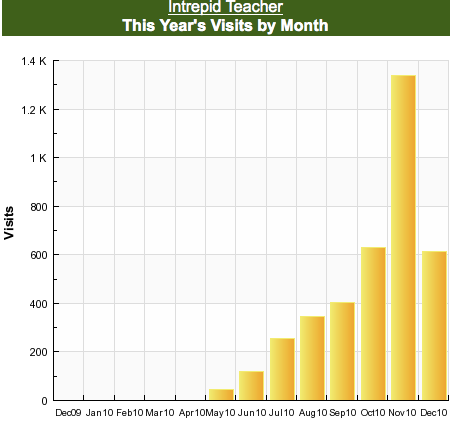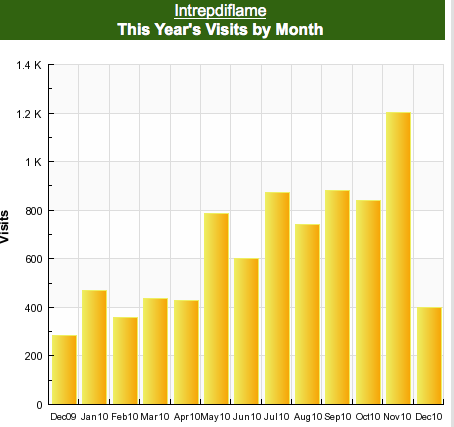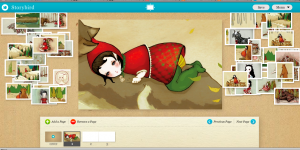As the year comes to close there will be the inevitable litany of blog posts recapping achievements, documenting successes and reflecting on next steps. Kim Cofino started it with her latest post, and since I am flying to Lombok tomorrow and hoping to take a much-deserved break from Twitter and Edublogging, I want to gather my thoughts here, now, in this blog post.
Unfortunately my list of accomplishments may sound a bit more personal than Kim’s, because I am not really working within a Tech team, regardless I would like to thank my colleagues at school, and my wife/team member/tech protégé Mairin Raisdana for being so open and hungry to learn about technology and move forward. So where to start?
It is a bit taboo and perhaps considered vain to talk about numbers, but since it is clear I have no issues with ego, awards, or numbers counting, I will start there. My numbers are up!
I am sure there are many that will say numbers don’t matter, but for someone who started a few years ago writing to an audience of one, it is encouraging and rewarding to watch the bars on the graph grow taller and taller. I am not arguing that higher numbers mean success or a better blog, or a better community, but I am saying that the more people stop by and read my blogs, the more chance there is to build authentic connections. Beyond the numbers, however, the thing I am most proud of and happy with are the consistent comments from my regular readers. People like Will Chamberlin, Adrienne Michetti, Clint Hamada, Cathy Crea, Melanie McBride, Tim Bray, and Keri Lee Beasley (There are so many more to mention!) have proven time and time again that having a small committed readership is more important than a huge one. So while increasing numbers are a good way to build a robust readership, a blog must have a foundation of people who look to it as a pleasure to read and with which to connect. I know that I have a support system in place that challenges my thinking, supports me and my students, and offers me material on which to reflect. So why mention numbers?
Over the last semester as my blogs have gained popularity, my voice and ideas are reaching more people. Through Twitter and my two blogs I have been able to connect with a variety of people worldwide. School kids in Canada, a variety of online interviews, and of course face-to-face connections. I have been accepted to present at the 21st Century Learning Conference in Hong Kong, and I am speaking with Melinda Alford about leading a cohort at the next Learning 2.0 conference in China. I have had constructive feedback on my teaching more here, and support for the blogging initiative I am trying to spearhead at our school.
Wow! That’s a lot of hyperlinks. Which means it has been a busy productive term. For people who are new to this online world of networks and connections, I hope my recount can shed some light on the power of blogging and connecting. It is not my intention to brag about my work, but to show what powerful professional development maintaining a blog can be. I was able to do all of this in addition to the in house “real” work I am doing on campus, building an ESL department from scratch, learning about the MYP, and helping the IT team move forward on schoolwide initiatives!
Furthermore, my students are making great progress within our classroom. I am experimenting and pushing the boundaries of what second language learners can do when given the tools to express themselves. In short, I am doing what I love and modeling behavior I would like to see in our school.
How does this happen? How did I go from blogging to myself to creating an authentic, caring, supportive, critical group of individuals who read my work, comment, share tweets, and invite me to conferences?
Consistent, open, honest sharing. This is the model that has worked for me. Everyone says they haven’t the time to blog or connect or do anything other than what the curriculum demands of them. I simply find that to be a cop out. In addition to what I have described above, I am raising two kids, writing a book, and leading a pretty satisfying rich life. I am not trying to say that I am superman and you should be like me; I am simply pointing out that building these networks takes time and energy and it is hard work, but if you take baby steps and stay with it it will bare fruit. Managing time is a choice we all make. If you are serious about blogging, it must be built into your day. Even if it is a few hours a week, it must be consistent.
I often catch myself comparing writing/blogging with running. I don’t do the latter, but first saw the connection through the book What We Talk About When We Talk About Running. Writing is like a marathon, you take your time and pace yourself, but always have a goal in mind.
 image by seeveeaar
image by seeveeaar
My goal has never been to become an Edublog celebrity, or to leave my classroom and present at conferences worldwide. I have only ever wanted to share my ideas, my thoughts, and yes my feelings in the most honest way I can to connect with as many individuals across the world as I can. I see this connection as the first steps toward understanding, which eventually I believe leads to a more just and peaceful world. A marathon indeed.
So as 2010 comes to close, I want to thank everyone who has supported me this year with your comments, tweets, external validations and of course love. I feel proud of the work I am doing and I owe much of its success to you. Whoever you, where ever you are reading these words.
Now I am off to Lombok to enjoy some of this:
 image by Fadil Basymeleh
image by Fadil Basymeleh
I look forward to spending time with family, friends, and my thoughts. Looking forward to disconnecting for awhile, taking a break from Twitter and blogs and enjoying the ocean, my daughter’s laughter, and my camera. See you all in 2011!







